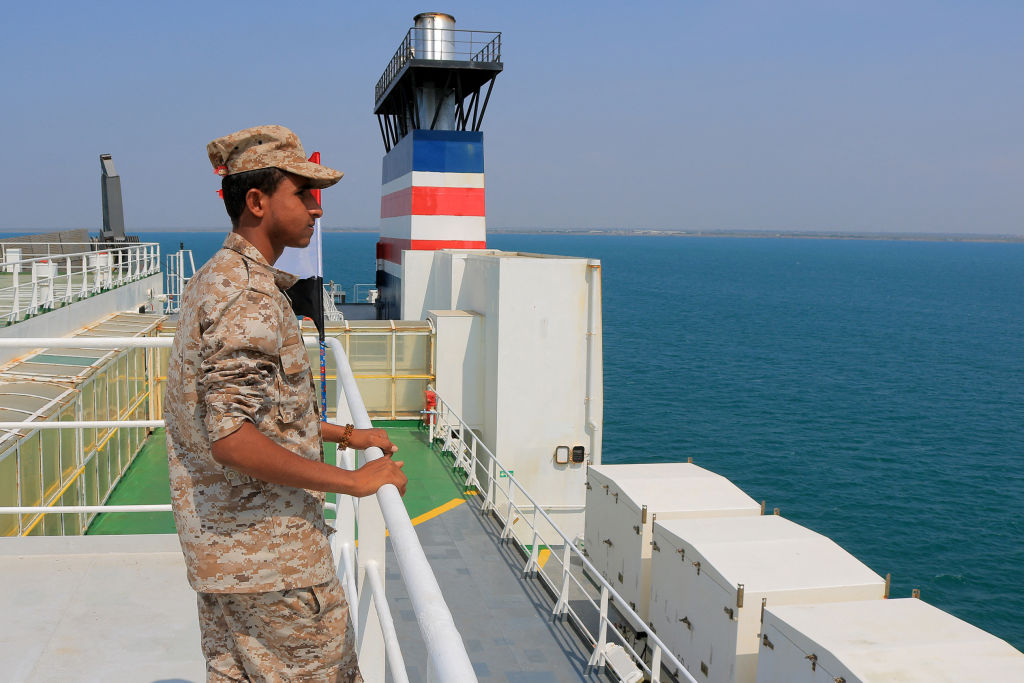
Since December, Indian naval ships have acted as first responders to at least 17 incidents where pirates have hijacked vessels in the Red Sea. In the latest incident this past week, an Indian warship named INS Sumitra played a pivotal role in rescuing two hijacked vessels off the coast of Somalia within 36 hours. According to reports by the Indian outlet The Hindu, the warship first responded to a distress message by an Iranian-flagged vessel on Jan. 28, where Indian naval officers eventually coerced pirates into safely releasing 17 crew members along with the boat. Two days later, it again intercepted another Iranian-flagged fishing vessel named Al Naeemi, rescuing 19 crew members.
"We will not be considered a responsible country when bad things are happening in the surrounding country and we say 'I have got nothing to do with this,’” S. Jaishankar, India’s Foreign Minister, told reporters on Tuesday.
India’s response comes amid growing fears that piracy in the Red Sea is resurging. Last October, the Houthis, a militia group in Yemen with backing from Iran, initiated a series of attacks on ships it claimed were linked to Israel in retaliation to Israel’s war against Hamas. In response to the escalation, nearly 20 countries have joined “Operation Prosperity Guardian,” a U.S.-led task force that aims to aid the safe movement of vessels in the Red Sea.
But India has so far refrained from doing so to balance its diplomatic interests with Iran, experts say. Relations between India and Iran have spanned centuries—the two countries shared a border until 1947, and continue to share a language, culture, and traditions to this day. Currently, both countries enjoy strong bilateral commercial, energy, and diplomatic links, according to the Indian Ministry of External Affairs.
With Indian Prime Minister Narendra Modi’s government having moved closer to Washington over the past few years, however, India now walks a diplomatic tightrope, while playing an important role in the Red Sea, which it has patrolled since 2008 with the region's largest naval presence, ahead of the U.S., France, and China.
Rather than using its capabilities to combat the Houthis in the Red Sea, the Indian navy has instead chosen to focus on combating pirates in the Gulf of Aden and the Arabian Sea by deploying guided missile cruisers, marine patrol aircraft, and drones to monitor commercial shipping in the area. This includes two frontline warships in the Gulf of Aden, at least 10 in the northern and western Arabian Sea, surveillance aircraft, and navy personnel including special commandos. According to Indian officials, the ships have monitored and investigated more than 250 vessels and small boats in the last two months, boarding more than 40.
“India faces a predicament in the Red Sea,” Abhijit Singh, a former naval officer who heads the Maritime Policy Initiative at the Observer Researcher Foundation, a New Delhi-based think-tank, tells TIME. “Indian decision-makers recognize the need to protect commercial shipping from militant attacks, but feel compelled to avoid participation in a military endeavor meant to fight a politically-backed group in control of vast parts of Yemen,” he says.
The recent attacks have significantly impacted India’s trade and export, which relies heavily on the Red Sea and Egypt’s Suez Canal for safe passage and acts as a gateway to key regions like Europe, North America, North Africa, and West Asia. Since the start of the conflict, India has experienced substantial delays in shipping exports including threats to cargo vessels, a surge in container shipping rates, and exporters holding back on shipments through the Red Sea. These delays could shave off around 20% of India’s total exports—valued at a whopping $200 billion—which currently pass through the Red Sea-Suez route, according to a New Delhi-based think tank.
At the same time, New Delhi is “increasingly wary of Houthi links with Iran,” Singh says, pointing to a recent investigation by the Indian Navy of an attack on a commercial vessel, the MV Chem Pluto, which was conducted last December in the Arabian Sea and revealed the likely use of an Iranian suicide drone, adding to concerns that the Houthis might have access to Iranian weaponry.
S. Jaishankar also raised the issue in a recent visit to Tehran. In a joint press conference with his Iranian counterpart, Hossein Amir-Abdollahian, he told reporters that “this fraught situation is not to the benefit of any party and this must be clearly recognized.” The visit came after a call between the minister and the U.S. Secretary of State Antony Blinken, where both parties expressed “shared concerns over reckless Houthi attacks in the southern Red Sea and the Gulf of Aden,” according to a statement by the U.S. Department of State.
“India, by some accounts, is keen to assist the U.S. in countering the Houthi threat—even if New Delhi remains undecided about joining the U.S.-led coalition in the Red Sea,” Singh says.
More Must-Reads From TIME
- The 100 Most Influential People of 2024
- Coco Gauff Is Playing for Herself Now
- Scenes From Pro-Palestinian Encampments Across U.S. Universities
- 6 Compliments That Land Every Time
- If You're Dating Right Now , You're Brave: Column
- The AI That Could Heal a Divided Internet
- Fallout Is a Brilliant Model for the Future of Video Game Adaptations
- Want Weekly Recs on What to Watch, Read, and More? Sign Up for Worth Your Time
Write to Astha Rajvanshi at astha.rajvanshi@time.com